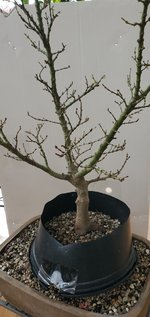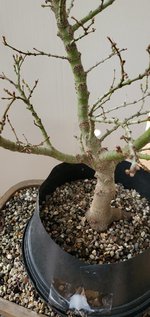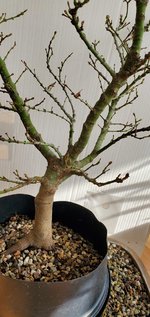qwerty Bonsai
Mame
I bought this mikawa yatsubusa last year, it was in a huge pot, almost solid root ball with heavy clay that hard to break. I moved it to this pot after cutting off maybe 1/3 root ball.
1. Can I wash the root ball to replace the rest of the original soil this spring? Or wait till next year?
2. How to design the tree next? There are 3 branches, so I need to remove one, currently plan to remove the one on right in picture one. Suggestions would.be appreciated!
1. Can I wash the root ball to replace the rest of the original soil this spring? Or wait till next year?
2. How to design the tree next? There are 3 branches, so I need to remove one, currently plan to remove the one on right in picture one. Suggestions would.be appreciated!




